Safety Guarantee
(Fredstidsbenyttelse)
In:
MFKOKM, Copenhagen, 1998
Akerhus Kunstnersenter, 1999
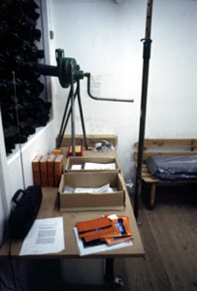 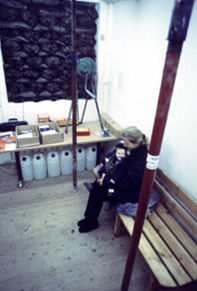 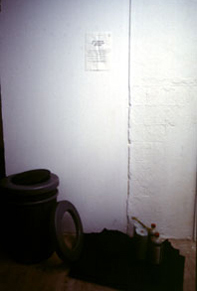
During a solo exhibition at the MFKOKM I transformed the small artist-run space into a safety shelter. The project was carried out in collaboration with Denmark’s national Civil Defense (CD). The shelter was constructed in the exhibition space and office according to the instructions and with the equipment provided by the CD.
The Danish CD and army have several emergency plans for a range of possible disasters. These include natural catastrophes such as earthquakes, floods, tornadoes, hurricanes, extreme cold, etc., as well as so-called "man-made disasters" such as nuclear accidents, severe ozone layer depletion, energy wars, revolution, riots, famine, terrorism (and “hi-tech terrorism”), war between the races, religious wars, etc. For most of these disasters it is recommended that civilians either seek out a public shelter or use one they have built themselves. The government, army, and CD strongly recommend that civilians build their own shelters, preferably in peace-time "while there’s still enough time and material", as one of the booklets explains. Several government instruction books and booklets on building safety shelters are still in print today.
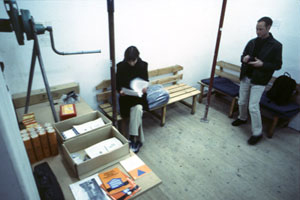 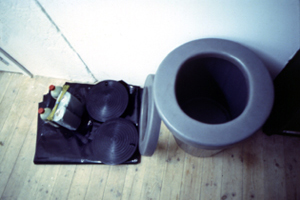
It was important to the project that the shelter in the gallery satisfy the standards of the CD. Visitors could look at the details of construction, read the instruction manuals, comment on it, and discuss its significance, but they would also know that it could potentially work–that for the period of the exhibition the shelter was there, ready if needed.
Unlike the CD, I was interested in the way fear is represented, incarnated, and systematized in contemporary welfare society–not in the form of the subjective angst of individual people, but in the "official" anxiety named and specified through parliamentary discussions, budgets, laws, regulations, and finally architecture (the buildings and systems which are continually produced and carefully maintained).
What could happen? What could go wrong? What is the worst possible scenario? By understanding and using the always-ready, always-waiting equipment of the CD as a (literal) ready-made, I wanted to point at fear not only as a personal and deeply subjective phenomena, but also as something inherent in our cultural configuration of safety, shelter and protection.
 
The project has since been carried out both in Sweden and Norway. The images here are from the Norwegian version.
(Akerhus Kunstnersenter, 1999)
|




